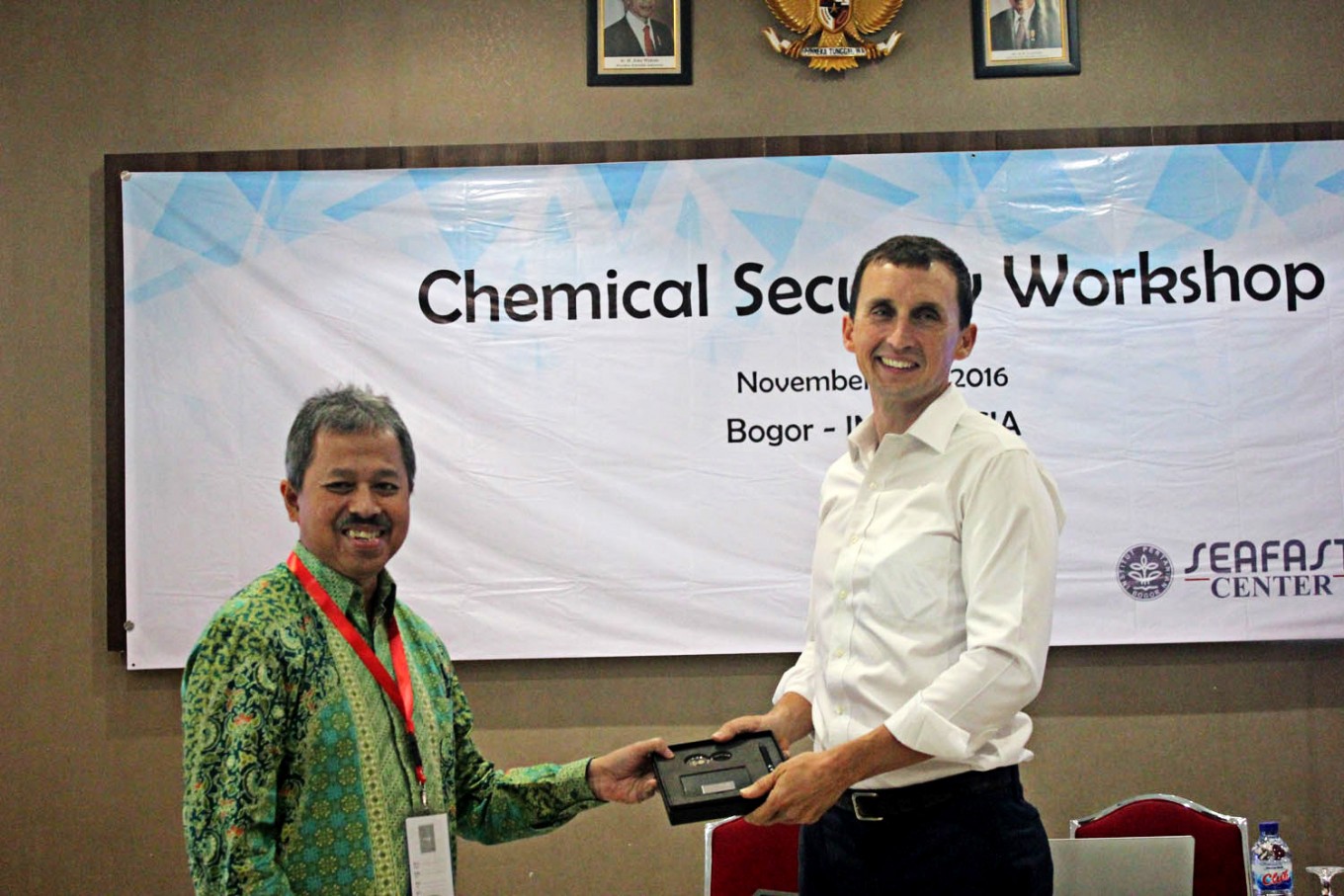Indonesian fishery products seeing high rejection rate in US
Change text size
Gift Premium Articles
to Anyone
 Food safety: Bogor Institute of Agriculture (IPB) deputy rector Anas Miftah Fauzi (left) hands over a souvenir to US Embassy Agricultural Attaché Thom Wright (right) during a chemical security workshop in Sentul, Bogor, recently. (JP/Theresia Sufa)
Food safety: Bogor Institute of Agriculture (IPB) deputy rector Anas Miftah Fauzi (left) hands over a souvenir to US Embassy Agricultural Attaché Thom Wright (right) during a chemical security workshop in Sentul, Bogor, recently. (JP/Theresia Sufa)
I
ndonesia ranks 11th among countries with the highest rejection rates of fishery products, especially frozen prawns, in the US market because of their poor quality, in which contaminants such as gravel, pieces of bamboo and even cockroach legs are reportedly often found in Indonesian products, an expert has said.
Nuri Andarwulan, a fishery expert from the South East Asian Food and Agricultural Science and Technology (SEAFAST) Center at the Bogor Institute of Agriculture (IPB), said its research had found that the US would reject on average 20 percent of Indonesian fishery products, especially frozen prawns.
“Hence, we hope fishery producers can pay more attention to hygiene-related aspects in the manufacturing of its products, starting from pond care, processing procedures, frozen techniques until loading at ports, in which temperatures in cold storage facilities must be well maintained,” said Nuri in a recent workshop jointly held by the US Department of Agriculture and SEAFAST Center.
The workshop focused on the monitoring of chemical residues, especially pesticides in food products, the management of chemical substances used in food processing chains and how to identify potentially risks of chemical substances.
Nuri said the high population growth in Indonesia was not being accompanied by significant increases in domestic food production. As a result, Indonesia still heavily depended on imported food products to fulfill domestic demand.
“Those imported foods are from various countries across the world, in which they may have different quality,” said Nuri, adding that as all Indonesians could access imported foods, there was vulnerability to food contamination risks, which must be prevented. (ebf)
--------------
Editor's note: There were several mistakes in the article titled “Indonesian fishery products seeing high rejection rate in US” by Theresia Sufa, which appeared on The Jakarta Post website on Nov. 13.
In a letter received on Nov. 16, the Maritime Affairs and Fisheries Ministry informed the Post that several pieces of data and information stipulated in the article were not completely accurate, which created misperceptions in society and could potentially taint the credibility of both the ministry and the Indonesian Fisheries Product Processing and Marketing Association (AP5I) as an association of business players that export fisheries products to the US.
In the first paragraph, it was mistakenly reported that “Indonesia ranks 11th among countries with the highest rejection rates of fishery products, especially frozen prawns, in the US market because of their poor quality, in which contaminants such as gravel, pieces of bamboo and even cockroach legs are reportedly often found in Indonesian products, an expert has said.”
The ministry stated that based on a notification from the US Food and Drug Administration (FDA), the reason that Indonesian fisheries products were rejected was not because of poor quality but cases of unclean products. The FDA did not mention in its notification that products were rejected because of gravel, pieces of bamboo or cockroach legs, as stated in the Post’s article, the ministry said.
It was stated in the second paragraph that “Nuri Andarwulan, a fishery expert from the South East Asian Food and Agricultural Science and Technology (SEAFAST) Center at the Bogor Institute of Agriculture (IPB), said its research had found that the US would reject on average 20 percent of Indonesian fishery products, especially frozen prawns.”
The ministry said this statement was also untrue because 20 percent was the rejection rate of fisheries products from the total food products imported by the US from around the world.
The ministry informed the Post that Indonesia’s frozen prawn products rejected by the FDA accounted for 0.06 percent of Indonesia’s total prawn exports to the US, not 20 percent as stated in the article.
As additional information, the ministry stated that in the January to September period, frozen prawn exports from Indonesia to the US amounted to 77.81 million kilograms of prawns worth US$737.16 million, up by 16.51 percent and 15.13 percent, respectively, from the same period in 2015 (source: The ministry’s Fish Quarantine and Fisheries Product Quality Control and Safety Agency, 2016).
We apologize for the mistakes and the inconvenience caused.
-- The Editor









